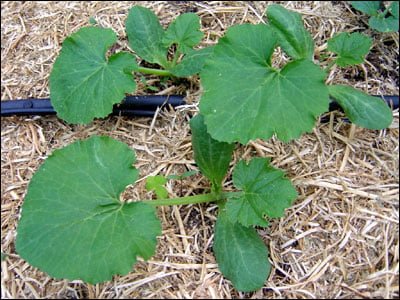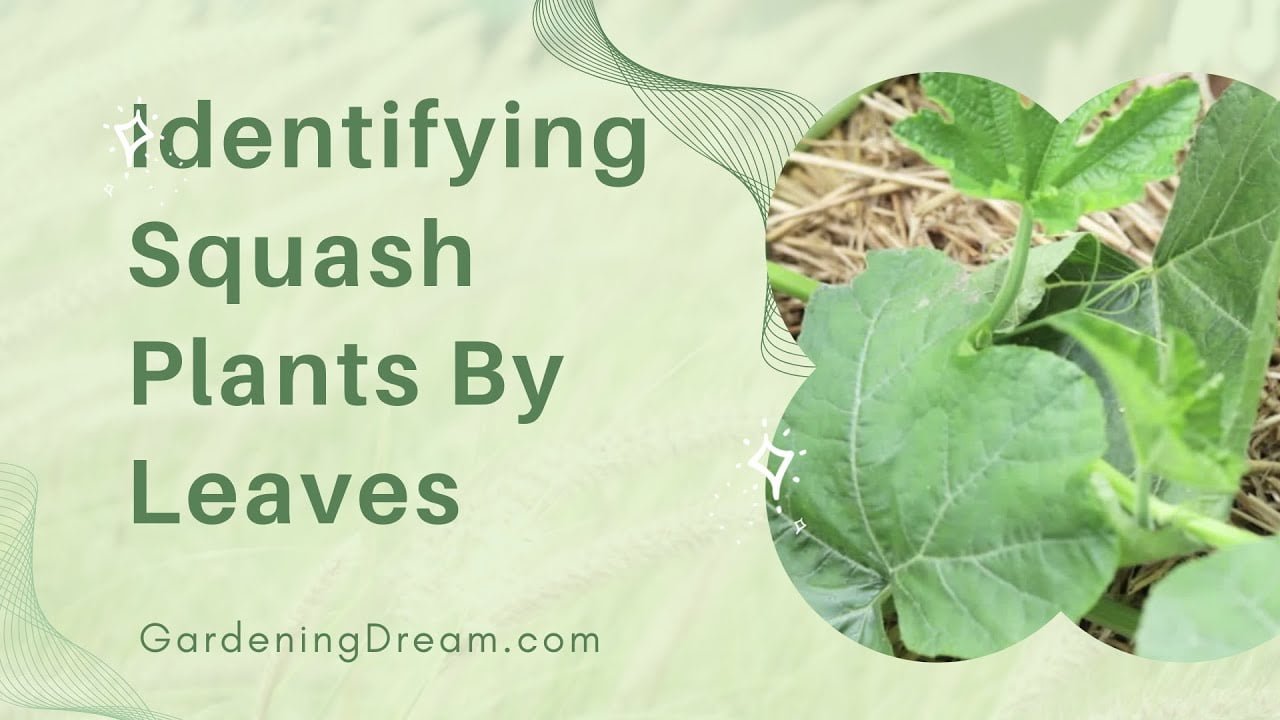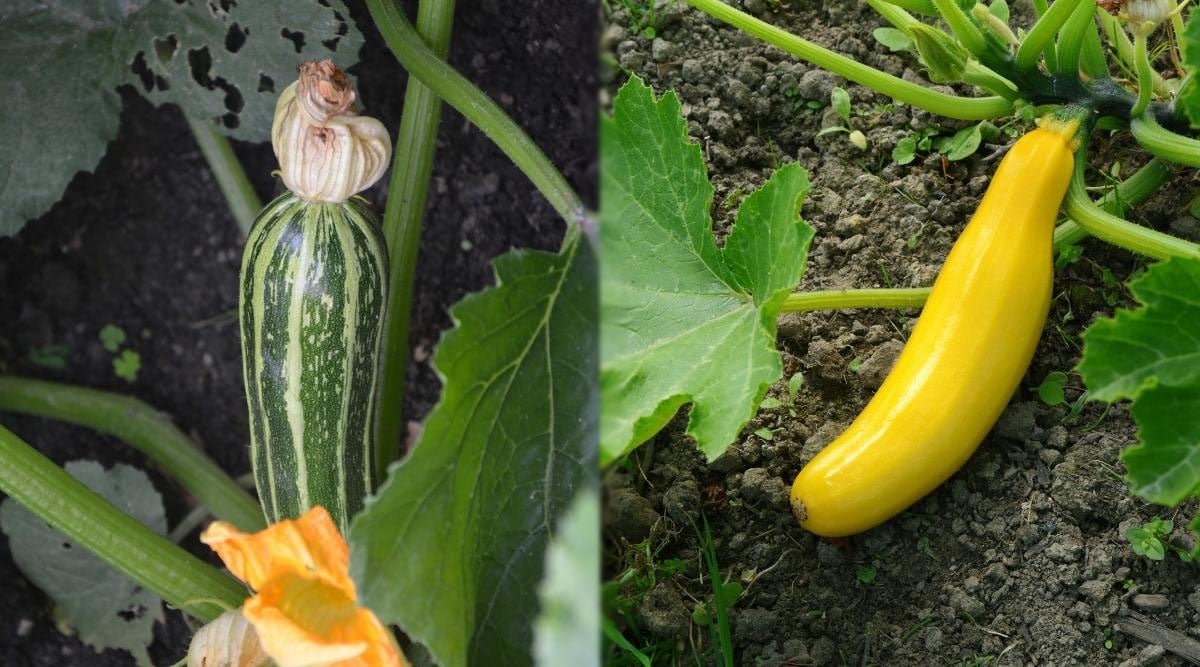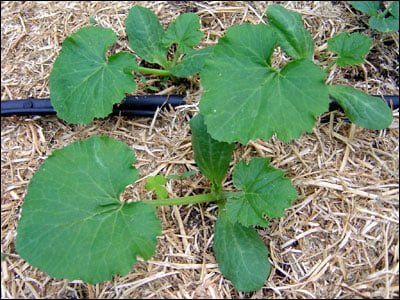Have you ever wandered through a garden and wondered, “What does a zucchini plant look like?” If so, you’re in the right place! In this article, we will explore the distinctive features of a zucchini plant, guiding you through the process of easily identifying these versatile and delicious plants. From the color and texture of its leaves to the unique shape and color of its fruit, you’ll become an expert in no time. So let’s get started on this exciting journey of discovering the secrets of a zucchini plant together!
Characteristics of a Zucchini Plant
Leaves
Zucchini plants have large, broad leaves that are dark green in color. The leaves are typically veined and have a slightly rough texture. They are shaped like a heart or an arrowhead, with a pointed tip and a slightly serrated edge. Zucchini leaves are usually around 6 to 8 inches long and 4 to 6 inches wide. The leaves are an important part of the plant as they help in photosynthesis, providing essential nutrients to the plant.
Stems
The stems of a zucchini plant are thick, sturdy, and covered in small prickly hairs. The color of the stems may vary, ranging from a light green to a darker shade. As the plant grows, the stems will become more woody and can be quite rigid. The stems serve as the support system of the plant, allowing it to stand upright and providing stability for the developing fruits.
Flowers
Zucchini plants produce beautiful, yellow-orange flowers. These flowers are typically large and showy, with five wide petals that form a star-like shape. The flowers can be either male or female, with the male flowers appearing first to attract pollinators. Female flowers can be identified by the small fruit attached at the base of the flower, which will eventually develop into a zucchini. The flowers not only add aesthetic appeal to the plant but also play a crucial role in the reproduction process.
Fruit
The most recognizable characteristic of a zucchini plant is, of course, the fruit it bears. Zucchini fruits usually have a cylindrical shape, with a smooth, shiny, and vibrant green skin. However, there are also varieties that produce yellow, grey, or round-shaped zucchinis. The size of the fruit can vary depending on the variety, but typically ranges from 6 to 10 inches in length. As the fruit grows, it should be regularly harvested to prevent over-ripening, as this can affect the quality and taste of the zucchini.
Growing Conditions for Zucchini Plants
Climate
Zucchini plants thrive in warm climates, preferring temperatures between 70-90°F (21-32°C). They are highly sensitive to frost, so it is essential to plant them after the threat of frost has passed. Additionally, zucchinis require a moderate amount of humidity to grow successfully. Areas with a long growing season and ample sunlight are ideal for cultivating zucchini plants.
Soil
Zucchini plants prefer well-draining soil that is rich in organic matter. The soil should be loose and fertile, allowing for proper root development and nutrient absorption. Prior to planting, it is advisable to improve the soil by incorporating compost or well-rotted manure. A pH level of 6 to 7 is optimal for zucchini cultivation.
Sunlight
Zucchini plants require full sun exposure to thrive. They need at least 6-8 hours of direct sunlight each day. Without adequate sunlight, the plant may become weak and susceptible to disease. Therefore, it is crucial to choose a planting location that receives ample sunlight.
Watering
Zucchini plants have moderately high water requirements. They need regular watering to keep the soil consistently moist, but not waterlogged. A deep watering once a week is usually sufficient, especially during periods of hot and dry weather. It is important to avoid overhead watering to prevent the development of fungal diseases. Instead, opt for a drip irrigation system or water at the base of the plant.

Different Varieties of Zucchini Plants
Yellow Zucchini
Yellow zucchini, also known as golden zucchini, is a variety of zucchini that differs in color from the traditional green variety. The yellow zucchini has a bright, sunny yellow skin and a milder flavor compared to its green counterpart. It has a similar cylindrical shape and can be harvested at the same size. Yellow zucchinis are not only visually appealing but also add a vibrant touch to various recipes.
Grey Zucchini
Grey zucchini, also referred to as Italian or Lebanese zucchini, is another popular variety. As the name suggests, it has a distinctive greyish-green skin. Grey zucchinis are typically smaller in size compared to other varieties and have a slightly sweeter and nuttier flavor. They are often used in Mediterranean cuisine and can be grilled, sautéed, or added to stews.
Round Zucchini
Unlike the traditional elongated shape, round zucchini plants produce fruits that are, as the name implies, round. These zucchinis are compact and measure about 4-6 inches in diameter. Round zucchinis have a mild flavor and a tender texture, making them versatile in the kitchen. They can be stuffed, sliced into rounds, or grated for various recipes such as fritters or casseroles.
Life Cycle of a Zucchini Plant
Seed Stage
The life cycle of a zucchini plant begins with a seed. Zucchini seeds are usually sown directly in the garden or in seed trays indoors before being transplanted. The seeds require warm soil temperatures to germinate properly, usually around 70-95°F (21-35°C). They should be planted at a depth of 1 inch and spaced about 2-3 feet apart. Germination typically occurs within 7-10 days.
Seedling Stage
Once the seeds have germinated, they will develop into seedlings. Zucchini seedlings will initially produce a pair of small, cotyledon leaves, followed by the growth of their true leaves. It is important to ensure that the seedlings receive adequate sunlight, warmth, and moisture during this stage to promote healthy growth. The seedlings can be transplanted into the garden when they have grown about 3-4 inches tall.
Mature Plant Stage
As the zucchini plant reaches maturity, it will continue to grow and produce flowers. The plant will develop a well-established root system and a sturdy stem. The flowers, both male and female, will begin to bloom, attracting pollinators such as bees and butterflies. After successful pollination, the female flowers will produce fruit, which can be harvested when they reach the desired size.

Identifying Zucchini Plants in the Garden
Seedling Appearance
Zucchini seedlings can easily be identified by their broad, heart-shaped leaves with a slightly rough texture. The cotyledon leaves are usually smaller and more rounded compared to the later true leaves. The seedlings will have a single main stem, which will develop several lateral branches as they grow.
Leaf Pattern
The leaves of zucchini plants follow an alternating pattern along the stem. Each leaf is attached to a petiole, which connects it to the stem. The leaves are usually large, with distinct veining and a slightly serrated edge. The dark green color and the shape of the leaves make them easily distinguishable in the garden.
Flowering Stage
Zucchini plants will enter their flowering stage once they have reached a certain level of maturity. The flowers are large, showy, and typically yellow or orange in color. Male flowers appear first, followed by the female flowers. The female flowers can be identified by their small fruit, which forms at the base of the flower.
Fruit Development
The development of fruit on a zucchini plant is a clear indication of its identity. The fruit starts off small and grows rapidly, reaching its full size within a few days. Zucchini fruits have a cylindrical shape and a vibrant green color. It is important to harvest the zucchinis at the appropriate size to ensure optimal taste and texture.
Common Pests and Diseases of Zucchini Plants
Squash Bugs
Squash bugs are a common pest that can affect zucchini plants. These flat, brown insects can cause damage by piercing the plant’s leaves and sucking out the sap. This can result in wilting, discoloration, and stunted growth. Regular monitoring and the removal of squash bugs by hand can help control their population. Additionally, using insecticidal soaps or organic pest control methods can be effective in managing these pests.
Powdery Mildew
Powdery mildew is a fungal disease that commonly affects zucchini plants. It appears as a white, powdery coating on the leaves and stems, inhibiting photosynthesis and affecting the plant’s overall health. To prevent powdery mildew, ensure proper air circulation, avoid overhead watering, and remove any infected plant material. Fungicidal sprays can also help control the spread of the disease.
Cucumber Beetles
Cucumber beetles are another common pest that can cause damage to zucchini plants. These beetles have yellow-green bodies and black stripes or dots. They feed on the leaves, flowers, and fruits of the plant, causing defoliation and transmitting bacterial wilt. Controlling these beetles can be challenging, but methods such as handpicking, row covers, and insecticidal sprays can help manage their population.

Harvesting Zucchini
Timing
Knowing when to harvest zucchini is crucial in ensuring optimal flavor and texture. Zucchinis should be harvested when they are young and tender, usually between 6-8 inches in length. Harvesting should be done frequently, every 2-3 days, as zucchinis can quickly become overripe and lose their desirable qualities. Waiting too long to harvest can result in woody and flavorless zucchinis.
Size
The size of a zucchini at the time of harvest is an important consideration. As mentioned earlier, zucchinis are typically harvested when they measure 6-8 inches long. However, this can vary depending on personal preference and the specific variety being grown. Some may prefer smaller zucchinis for their tenderness, while others may enjoy larger zucchinis for stuffing or slicing purposes.
Method
To harvest zucchinis, gently hold the fruit close to the stem and use a sharp knife or pair of scissors to cut it free. Avoid pulling or twisting the fruit, as this can damage the plant. Once harvested, zucchinis should be handled with care to prevent bruising or physical damage. It is best to use the harvested zucchinis immediately or store them properly to maintain their freshness.
Storing Zucchini
Refrigeration
Zucchinis can be stored in the refrigerator to prolong their freshness. To store zucchinis, place them in a perforated plastic bag or wrap them in a damp paper towel to prevent moisture loss. Stored in this manner, zucchinis can remain fresh for up to one week. It is important to note that zucchinis are best consumed fresh, as their quality can decline over time.
Freezing
Another method of storing zucchinis is by freezing them. To freeze zucchinis, wash and dry them thoroughly, then slice or chop them into desired shapes. Blanch the zucchini pieces in boiling water for 1-2 minutes, then cool them in an ice bath. Drain the zucchini, pat them dry, and transfer to freezer-safe containers or bags. Properly frozen zucchinis can last for up to 3 months.
Canning
Canning zucchinis is a popular method for long-term preservation. The process involves packing zucchini pieces into jars and covering them with a brine or pickling solution. The jars are then processed in a water bath canner to ensure proper sealing. Canned zucchinis can last for up to one year when stored in a cool, dark place. Following proper canning procedures is essential to prevent spoilage and foodborne illnesses.

Utilizing Zucchini Plants in the Kitchen
Recipes
Zucchinis are incredibly versatile and can be used in a wide range of delicious recipes. They can be sliced and grilled, sautéed with other vegetables, or spiralized into “zoodles” as a low-carb pasta alternative. Zucchinis can also be used in baking, adding moisture and texture to cakes, bread, and muffins. They can be stuffed, made into soups or stews, or even pickled for a tangy treat.
Cooking Tips
When cooking zucchini, it is important not to overcook them, as they can become mushy and lose their vibrant color. Zucchinis can be quickly cooked on high heat, stir-fried with other vegetables, or added to salads for a fresh crunch. If baking, consider squeezing out excess moisture from grated zucchinis to prevent a soggy texture in the final dish. Experimenting with different cooking techniques and flavor combinations can help unlock the full potential of zucchinis in the kitchen.
Health Benefits
Zucchinis are not only delicious but also packed with nutritional benefits. They are low in calories and high in water content, making them a great choice for weight management. Zucchinis are a good source of fiber, which aids in digestion and promotes a healthy gut. They are also rich in vitamins A, C, and K, as well as potassium and folate. These nutrients contribute to overall well-being and support various bodily functions.
Troubleshooting Zucchini Plant Issues
Wilting Leaves
Wilting leaves on a zucchini plant can be a sign of various issues. Over or under-watering, nutrient deficiencies, or pest infestations can all cause the leaves to wilt. It is important to assess the watering schedule, provide proper fertilization, and regularly inspect the plant for pests. Adjustments to watering and appropriate treatment methods can help revive the plant and prevent further wilting.
Fruit Rot
Fruit rot is a common problem that can affect zucchinis, especially in humid or wet conditions. This condition is typically caused by fungal infections, particularly if the zucchinis come into contact with moist soil. To prevent fruit rot, avoid overhead watering and provide adequate spacing between plants for proper air circulation. If fruit rot is detected, promptly remove the affected fruits to prevent the spread of the disease.
Stunted Growth
Stunted growth in zucchini plants can be a result of several factors, including nutrient deficiencies, pest damage, or unfavorable growing conditions. Regular fertilization with a balanced fertilizer and proper pest management can help address these issues. Additionally, ensuring that the plants receive sufficient sunlight, water, and proper spacing can promote healthy growth and prevent stunted development.
By familiarizing yourself with the characteristics, growing conditions, varieties, life cycle, identification, pests and diseases, harvesting and storage, culinary uses, and troubleshooting of zucchini plants, you will be well-equipped to grow and enjoy these versatile and rewarding vegetables in your garden. Whether you’re a seasoned gardener or a novice, cultivating zucchini plants can be a delightful and fruitful experience. So, get ready to embark on a green journey and witness the wonders of zucchini plants firsthand!




